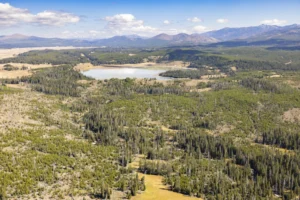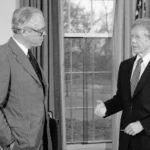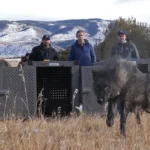Wyoming Labeled as One of the Most Dangerous States for Drivers, Study Finds
Local transportation official disagrees, says report is skewed against the state
- Published In: Other News & Features
- Last Updated: Dec 01, 2022

A plow clears snow from Interstate 80 in Wyoming, which ranked as the third most dangerous state for drivers in a recent Forbes Advisory study. (Courtesy photo from the Wyoming Department of Transportation)
By Shen Wu Tan
Special to the Wyoming Truth
This story has been updated from a previous version.
Black ice. Wind gusts. Reduced visibility. Car crashes.
Transportation alerts and safety warnings for Wyoming roadways have been rising lately as winter approaches. In fact, Wyoming recently ranked as one of the most dangerous places for drivers in the nation, a new study claims.
The Cowboy State secured third place out of all 50 U.S. states, trailing behind only South Carolina and Montana, report results from Forbes Advisor show. The study, which pulled data from the National Highway Traffic Safety Administration, found that 33% of car accident fatalities in Wyoming were from speeding while 39% were from impaired driving. It also revealed that deaths from car crashes in Wyoming actually decreased 14% from 2019 to 2020.
“While accidents can occur anywhere, some U.S. states have more dangerous roads than others,” the Forbes Advisor report says. “Research has shown red states (which most southern states are) tend to have more traffic deaths, attributed to factors such as more rural roads, less stringent safety laws and lower income and education levels.”
However, Doug McGee, a spokesperson for the Wyoming Department of Transportation, strongly disagreed with the report’s findings and described it as biased against the state.
“Studies like this are skewed against Wyoming, largely because we have a very low population, not much more than half a million, compared to the total volume of traffic on our roads,” McGee said. “We are a bridge state, if you will. Most traffic traveling across our state did not originate in Wyoming and will not end in Wyoming…. Relatively speaking, we have a huge traffic count.… So, one incident when you do a per capita study has a huge effect on our percentage as opposed to more highly populated states.”
McGee acknowledged that more car crashes occur in Wyoming when winter weather hits and expressed concern about the rise of distracted driving and low seat belt use. In fatal car crashes, Wyoming residents were not buckled up over 80% of the time compared to 40% for a non-residents, he noted.
So far this year, there have been 104 car crashes and 120 fatalities as of Nov. 30, compared to 103 crashes and 111 fatalities for all of 2021, figures from the Wyoming Highway Patrol show. Yet, the number of fatalities to date in 2022 is lower than the 128 deaths recorded in 2020 and the 147 documented in 2019.
“In Wyoming, the major contributing factors are long distances, work-related accidents often due to fatigue and excessive speed,” Sen. Bill Landen (R-Casper), chairman of the Senate Transportation, Highways and Military Affairs Committee, said about car crashes. “Our highway patrol testified not long ago that drivers are driving faster and faster, especially on the interstates. Currently, we are down more than 35 highway patrol troopers so it is difficult to ticket everyone who breaks those limits. Obviously, Mother Nature plays a huge role in highway danger situations.”
Single vehicle rollovers are the most common type of fatal car crash in Wyoming, whether it’s due to distracted driving or winter weather driving, according to Jordan Achs, another spokesperson for the Wyoming Department of Transportation.
Higher speeds and long stretches of roads, such as Interstate 80, can lead to rollovers. Achs added that Wyoming residents often must drive further distances between communities, so they spend more time behind the wheel and deal with weather-related challenges, including powerful wind gusts and snow squalls.
As drivers face cold weather and hazardous road conditions, the Wyoming Department of Transportation offered the following safety tips:
- Always buckle up.
- Make sure children are in appropriate car seats and that these car seats are installed correctly.
- Be aware of road conditions and traffic alerts. Drivers can check 511 for information.
- Give plows room to work and to clear snow from the roads.
- Never drive while intoxicated and always assign a designated driver.
- Don’t drive distracted. Pay attention to the roads—not a cell phone.
- Drive according to weather conditions whether it’s snow, fog or ice.













